https://www.ashevillehabitat.org/wp-content/uploads/2018/12/Blog_AltGiving2017-2.jpg
566
1500
Asheville Habitat
https://www.ashevillehabitat.org/wp-content/uploads/2022/11/AAHH-logo_black_with-counties-tag-300x150.jpg
Asheville Habitat2017-11-16 00:00:002018-12-19 16:13:11Build a Better Future With Your Holiday Gift
https://www.ashevillehabitat.org/wp-content/uploads/2018/12/Blog_Shannon-and-Kelly.jpg
566
1500
Asheville Habitat
https://www.ashevillehabitat.org/wp-content/uploads/2022/11/AAHH-logo_black_with-counties-tag-300x150.jpg
Asheville Habitat2017-11-06 00:00:002018-12-19 16:13:11Homeownership Brings Friendship Full Circle
https://www.ashevillehabitat.org/wp-content/uploads/2018/12/Shiloh-blog-photo_REV.jpg
566
1500
Asheville Habitat
https://www.ashevillehabitat.org/wp-content/uploads/2022/11/AAHH-logo_black_with-counties-tag-300x150.jpg
Asheville Habitat2017-10-31 00:00:002018-12-19 16:13:11Shiloh: Let’s Build! Campaign Built More Than Houses
https://www.ashevillehabitat.org/wp-content/uploads/2018/12/blog-McKinley-6-house-dedication.jpg
350
800
Asheville Habitat
https://www.ashevillehabitat.org/wp-content/uploads/2022/11/AAHH-logo_black_with-counties-tag-300x150.jpg
Asheville Habitat2017-07-18 00:00:002018-12-19 16:13:10Six More Families Are HOME
https://www.ashevillehabitat.org/wp-content/uploads/2018/12/SpringMailer2017_BlogImage-1.jpg
350
800
Asheville Habitat
https://www.ashevillehabitat.org/wp-content/uploads/2022/11/AAHH-logo_black_with-counties-tag-300x150.jpg
Asheville Habitat2017-04-13 00:00:002017-04-13 00:00:00More than new homes: Habitat’s Home Repair is changing lives.
https://www.ashevillehabitat.org/wp-content/uploads/2018/12/blog-Torres-story.jpg
350
800
Asheville Habitat
https://www.ashevillehabitat.org/wp-content/uploads/2022/11/AAHH-logo_black_with-counties-tag-300x150.jpg
Asheville Habitat2017-03-27 00:00:002017-03-27 00:00:00New House, New Beginnings
https://www.ashevillehabitat.org/wp-content/uploads/2018/12/blog-March-Madness2017.jpg
350
800
Asheville Habitat
https://www.ashevillehabitat.org/wp-content/uploads/2022/11/AAHH-logo_black_with-counties-tag-300x150.jpg
Asheville Habitat2017-03-21 00:00:002017-03-21 00:00:00Spring Break Builders
https://www.ashevillehabitat.org/wp-content/uploads/2018/12/blog-Monday-register-crews.jpg
350
800
Asheville Habitat
https://www.ashevillehabitat.org/wp-content/uploads/2022/11/AAHH-logo_black_with-counties-tag-300x150.jpg
Asheville Habitat2017-03-02 00:00:002017-03-02 00:00:00Meaningful Mondays
https://www.ashevillehabitat.org/wp-content/uploads/2018/12/blog-racial-inequality-in-housing.jpg
350
800
Asheville Habitat
https://www.ashevillehabitat.org/wp-content/uploads/2022/11/AAHH-logo_black_with-counties-tag-300x150.jpg
Asheville Habitat2017-01-20 00:00:002017-01-20 00:00:00Where Habitat Fits in the Movement for Racial Equity
https://www.ashevillehabitat.org/wp-content/uploads/2018/12/2016AltGivingBlogPic.jpg
350
800
Asheville Habitat
https://www.ashevillehabitat.org/wp-content/uploads/2022/11/AAHH-logo_black_with-counties-tag-300x150.jpg
Asheville Habitat2016-11-15 00:00:002016-11-15 00:00:00Everyone deserves an opportunity to build a better future.
Scroll to top
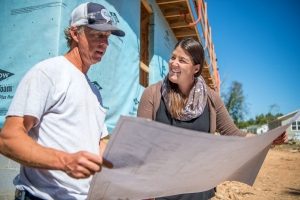
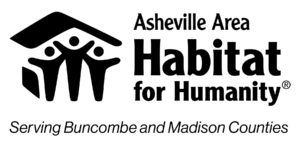

 As a stressed out single parent myself, I had been on the other side of the desk many time before. Being employed as a full-time case worker meant that I earned just enough to disqualify me from receiving any public assistance, but not enough to pay the bills. One bi-weekly paycheck went towards paying the rent without a dollar to spare. I remember crying at the grocery store because I didn’t have enough change to buy a box of tissues for my sick child. Kelly may have been embarrassed about crying in my office, but seeing a single parent in tears was neither surprising nor memorable; it was my life reflected back at me.
As a stressed out single parent myself, I had been on the other side of the desk many time before. Being employed as a full-time case worker meant that I earned just enough to disqualify me from receiving any public assistance, but not enough to pay the bills. One bi-weekly paycheck went towards paying the rent without a dollar to spare. I remember crying at the grocery store because I didn’t have enough change to buy a box of tissues for my sick child. Kelly may have been embarrassed about crying in my office, but seeing a single parent in tears was neither surprising nor memorable; it was my life reflected back at me.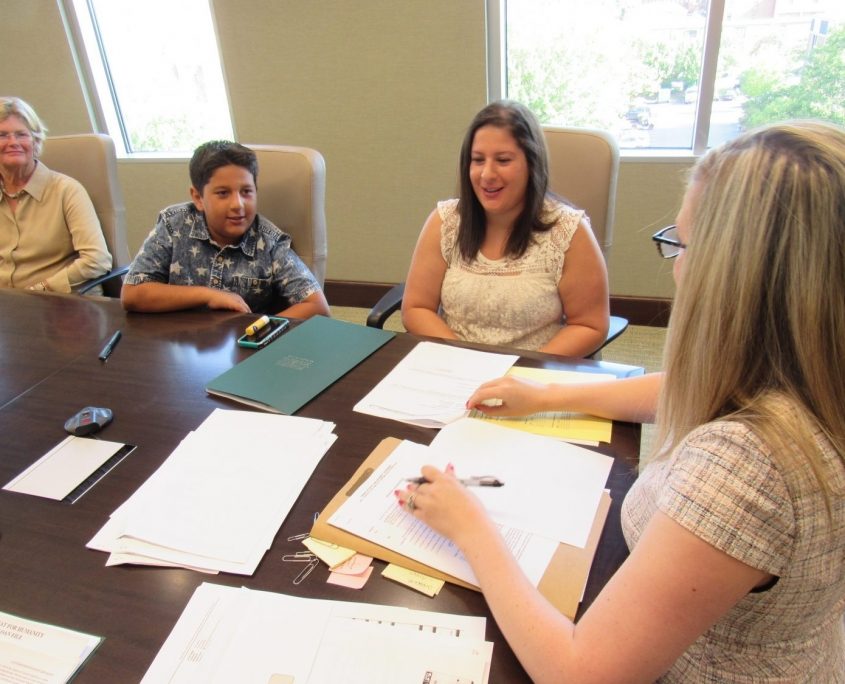
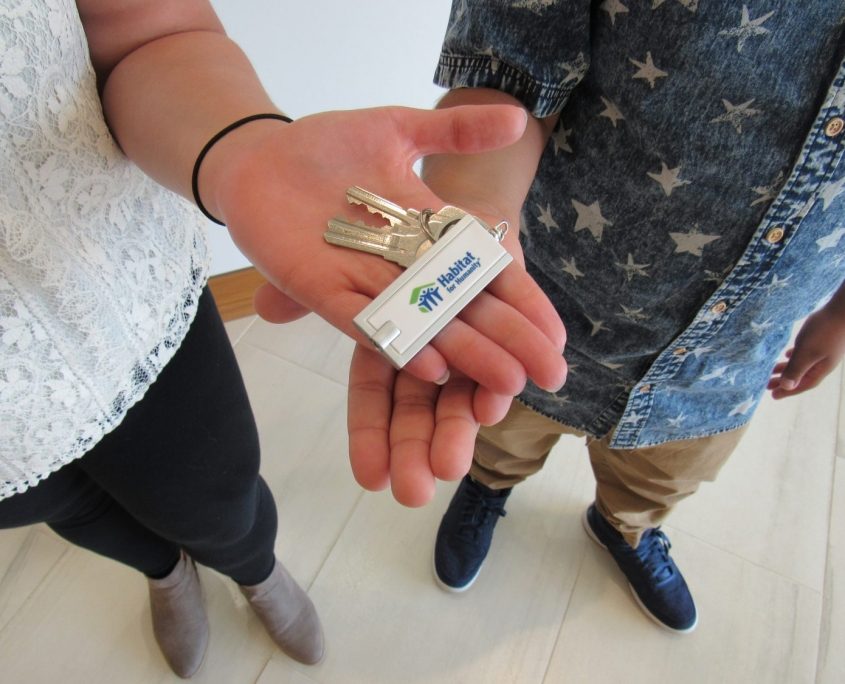
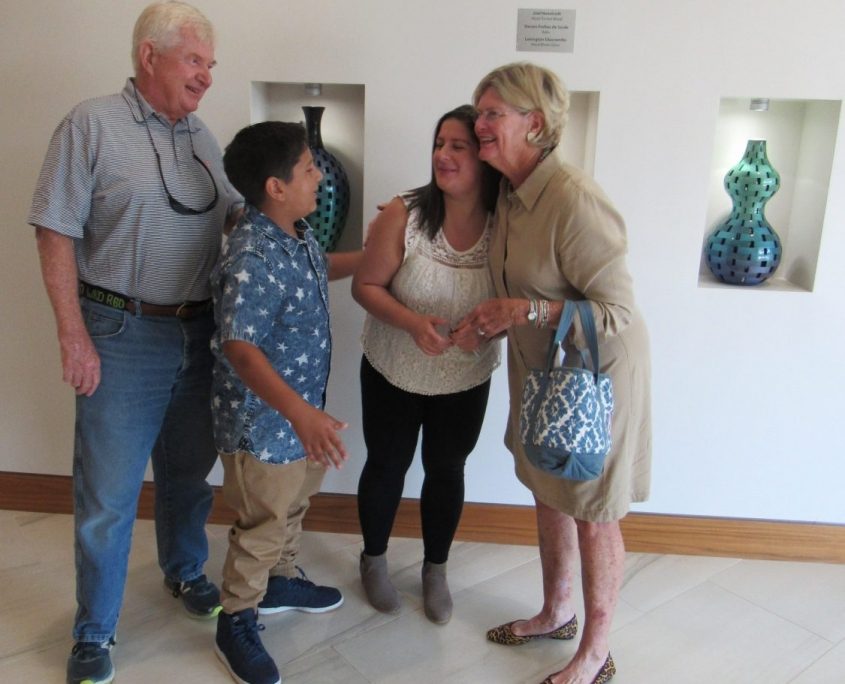
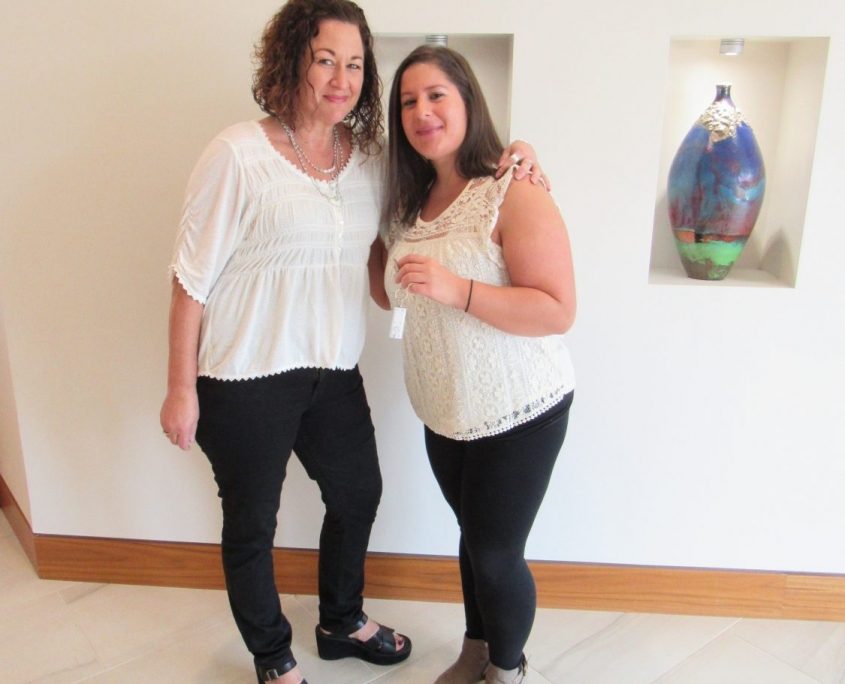
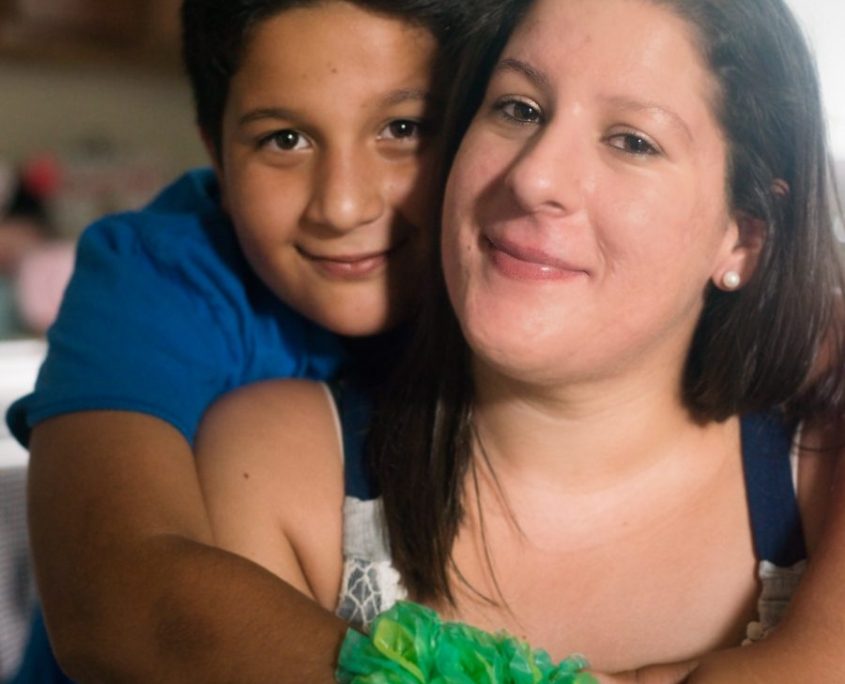
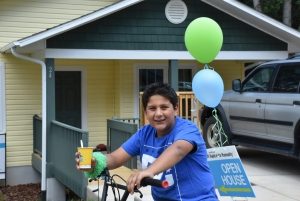 These homeowners are putting down roots in a community, in a neighborhood where everyone already knows each another. They took classes together and helped build each others’ homes. Now, they sit on their front porches, watch kids ride bikes in the safe cul-de-sac, and host family and friends for BBQs. And they can plan and save for the future because they know the rent won’t go up, the house won’t be sold, and the children won’t have to switch schools due to yet another unwelcome move. They are building strength, stability, and self-reliance on the foundation of a decent and affordable home. Thanks to all of you who provided your time, your voice, and/or your financial support!
These homeowners are putting down roots in a community, in a neighborhood where everyone already knows each another. They took classes together and helped build each others’ homes. Now, they sit on their front porches, watch kids ride bikes in the safe cul-de-sac, and host family and friends for BBQs. And they can plan and save for the future because they know the rent won’t go up, the house won’t be sold, and the children won’t have to switch schools due to yet another unwelcome move. They are building strength, stability, and self-reliance on the foundation of a decent and affordable home. Thanks to all of you who provided your time, your voice, and/or your financial support!
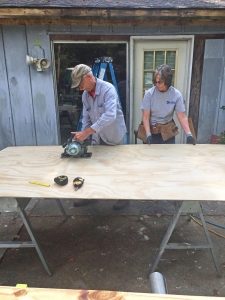

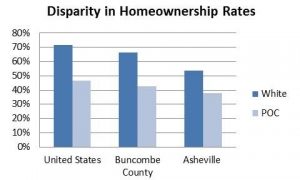
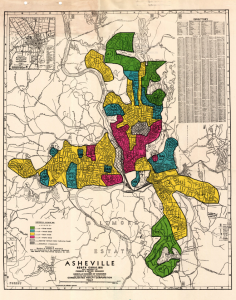
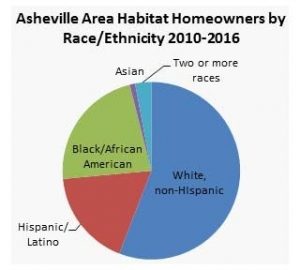 Habitat creates a way for households facing economic barriers to achieve homeownership and begin to close the wealth gap, but we can’t do it alone. To achieve equity in rates of homeownership nearly 3,000 additional households of color in Buncombe County will need the opportunity to become homeowners. To achieve this scale, we will need many more lenders to adopt policies that help households of color overcome historical barriers to mortgage loans. We need to grow housing and financial counseling opportunities to help aspiring homebuyers become “mortgage ready”. We need more affordable rental options and tenant advocacy so that renters have the stability needed to save and prepare for future ownership. Finally, we need home repair and foreclosure prevention assistance to help existing homeowners to remain at home. In short, it will take everyone committing to give our time, our financial support, and our voices to advance the dream of equality of opportunity for all our neighbors regardless of race.
Habitat creates a way for households facing economic barriers to achieve homeownership and begin to close the wealth gap, but we can’t do it alone. To achieve equity in rates of homeownership nearly 3,000 additional households of color in Buncombe County will need the opportunity to become homeowners. To achieve this scale, we will need many more lenders to adopt policies that help households of color overcome historical barriers to mortgage loans. We need to grow housing and financial counseling opportunities to help aspiring homebuyers become “mortgage ready”. We need more affordable rental options and tenant advocacy so that renters have the stability needed to save and prepare for future ownership. Finally, we need home repair and foreclosure prevention assistance to help existing homeowners to remain at home. In short, it will take everyone committing to give our time, our financial support, and our voices to advance the dream of equality of opportunity for all our neighbors regardless of race.